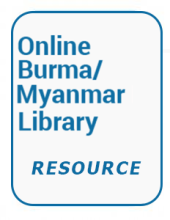Land Library Search
Through our robust search engine, you can search for any item of the over 73,000 highly curated resources in the Land Library.
If you would like to find an overview of what is possible, feel free to peruse the Search Guide.
/ library resources
Showing items 1 through 9 of 21.Property rights economically empower women by creating opportunities for earning income, securing their place in the community and ensuring their livelihoods. When women are economically empowered, it spurs development for their families and communities.
Finding Food in Fear/Living in Fear
Introduction for ‘one family’....
... In Myanmar, people's participation has been prioritized as an imperative of national forest policy in 1995 endorsed by the community forestry instructions (DFIs). Today, there are about 42,148 ha of community forestry (CF) management by 572 user groups (USGs).
Message from KDNG: "As a network of residents of Kachin State, we, the Kachin Development Networking Group, have been monitoring plans by the stateowned China Power Investment Corporation and Burma’s military regime to build seven dams on the Irrawaddy River and its two main tributaries.
Message from KDNG: "As a network of residents of Kachin State, we, the Kachin Development Networking Group, have been monitoring plans by the stateowned China Power Investment Corporation and Burma’s military regime to build seven dams on the Irrawaddy River and its two main tributaries.
The protection given to the land rights of women, orphans and any other vulnerable groups in Northern and Eastern Uganda is probably as good as can be found anywhere in the world. Customary land law is based on three main principles.
10,000 Shans uprooted, 500 houses burned in Burmese regime’s latest scorched earth campaign (press release)...
Map of villages forcibly relocated...
Summary of villages forcibly relocated...
Images of the Burmese regime's latest scorched earth campaign
(4th edition).....
"This compilation consists of selected paragraphs of the Conclusions of UNHCR’s
Executive Committee grouped by subject. It seeks to show the progressive development of
Executive Committee deliberations on a given topic over time, and to add a reference tool
This article examines the evolution of policy recommendations concerning rural land issues since the formulation of the World Bank’s “Land Reform Policy Paper” in 1975.



